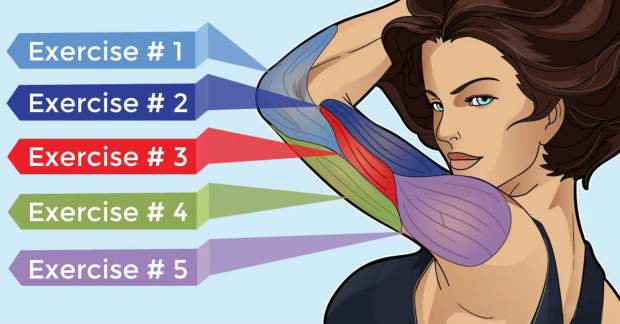Stronger arms and shoulders make it easier to lift, push, carry, or pull something (grocery shopping, golf bags, grandchildren). And don’t think it’s too late to start. A recent study published in the Human Kinetics Journal found that even men and women ages 85 and older who had never lifted weights before could increase both muscle volume and strength by doing resistance training three times a week for 12 weeks. The study also found that a younger group aged 65 to 75 also gained strength.
Having arms and shoulders that look athletic instead of tired just requires the right combination of movements to work them from every possible angle. This series of seven moves will help you develop a stronger upper body at any age, in less time than you think.
How to do it: Use very light weights to start, or even practice without weights first, to just get used to and understand the movements. Start with the first exercise and do each one in order. Rest 60 seconds between exercises. Once you’ve completed the last exercise, rest for 60 seconds and then repeat the entire routine one more time.
1. Lifting weights on the shoulders, standing and alternating arms
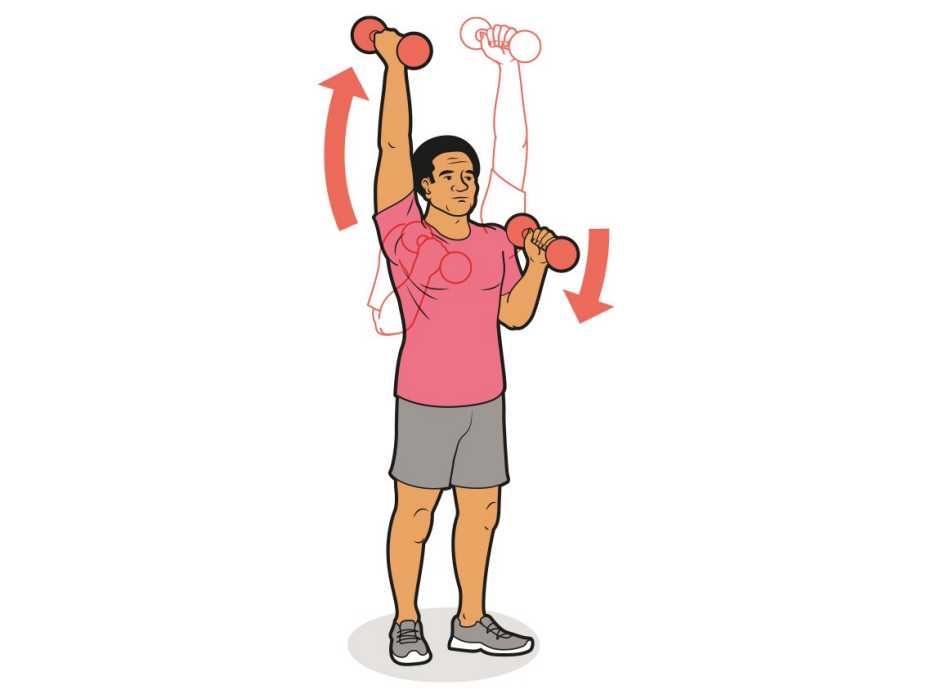
- Stand with a light dumbbell in each hand, hands at shoulder width, palms facing the sides of your head.
- Slowly raise the dumbbell with your right hand toward the ceiling, until your arm is almost fully extended above your head.
- Pause and then slowly lower the weight until it is back to shoulder height. Now lift the weight with your left hand.
- Continue doing the exercise alternating arms. Repeat 10 to 15 times for each arm.
2. Abductions in the plane of the scapula (“scaptions”), sitting
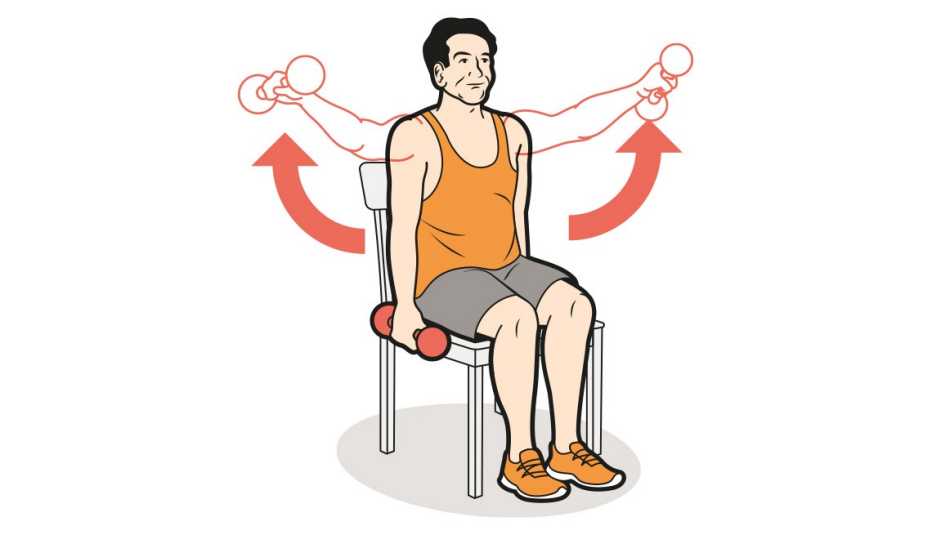
- Sit in a chair with a light dumbbell in each hand, arms at your sides, palms facing inward.
- Keeping your arms straight (elbows slightly bent), slowly raise the weights to the sides and a little forward until they are almost parallel (at a slightly elevated angle) with the floor.
- You should be able to see your hands in your peripheral vision at all times.
Pro Athlete Tip: Place your arms in the ten and two o’clock position at the highest point of the movement.
3. Weightlifting, seated and bent over
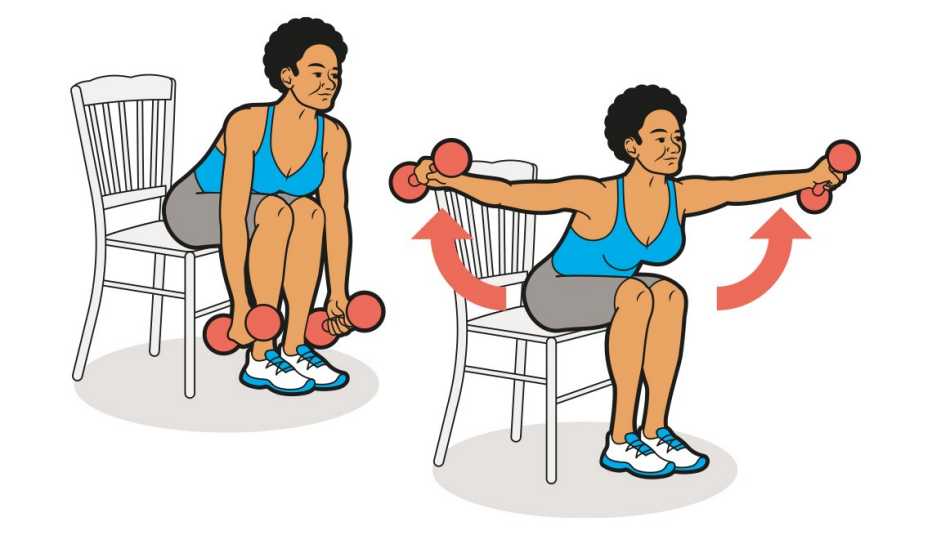
- Sit holding a light dumbbell in each hand, arms at your sides and palms facing inward.
- Bend at the waist and lean forward as far as you comfortably can (at least 45 degrees). Keep your back flat.
- Keeping your arms straight, raise them and bring them out slowly until they are parallel with the floor.
- Pause and then slowly lower your arms. Repeat 10 to 15 times.
Pro Athlete Tip: Keep your upper body still while lifting the weights. If you make a sharp upward movement you will create momentum and let your lower back do some of the effort instead of your shoulders.
4. Lying Triceps Extensions

- Lie on the floor with your knees bent and feet flat on the floor. Hold a light dumbbell in each hand and extend your arms above your head.
- Without moving your upper arms, bend your elbows and slowly lower the weights until they are level with your ears.
- Pause and raise the weights again over your head, slowly straightening your elbows. Repeat 10 to 15 times.
Tip from a professional athlete: The upper part of the arms should always remain perpendicular to the floor; do not push your elbows forward.
5. Bicep curls, seated
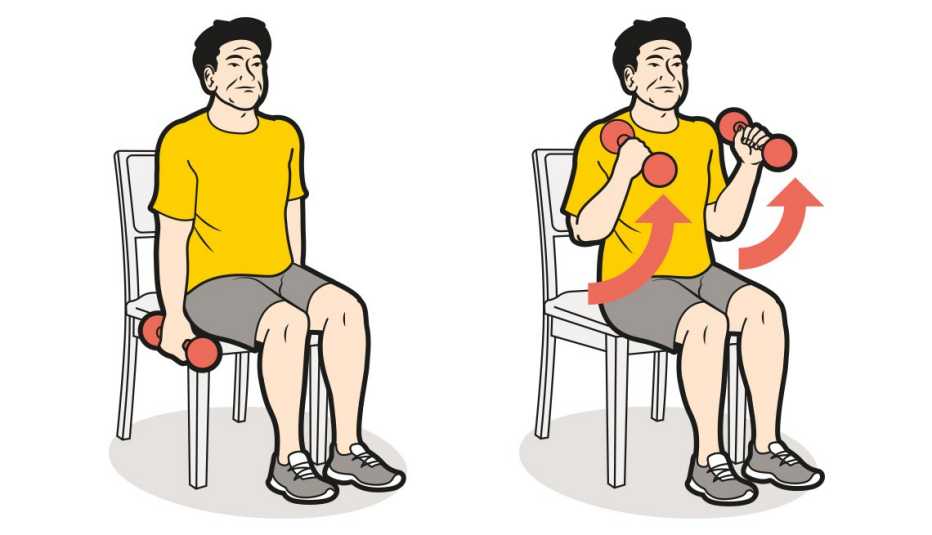
- Sit in a chair with a light dumbbell in each hand, arms at your sides, palms facing inward.
- Keep your arms close to your sides, bend your elbows and slowly flex your arms, lifting the weights to shoulder height. Keep your palms facing inward throughout the exercise.
- Pause briefly and then slowly lower your arms until they are fully extended.
- Repeat 10 to 15 times.
Pro athlete tip: Keep your wrists straight. At the top of the exercise, the ends of the dumbbells should be at shoulder height.
6. Overhead Triceps Extensions

- Stand and lift a light weight above your head; Hold the dumbbell so that each palm presses the inside of the plate (the end of the dumbbell).
- Without moving your upper arms, bend your elbows and lower the dumbbell behind your head as far as is comfortable.
- Pause, then reverse the movement, straightening your elbows to raise the weight above your head again. Don’t move your upper arms.
- When the dumbbell is once again directly overhead, you have completed one repetition.
- Repeat 10 to 15 times; Make sure not to move your upper arms during the exercise.
Tip from a professional athlete: Keep your neck as upright as you can and don’t let your elbows go back when you lower the weight.
7. Wall push-ups
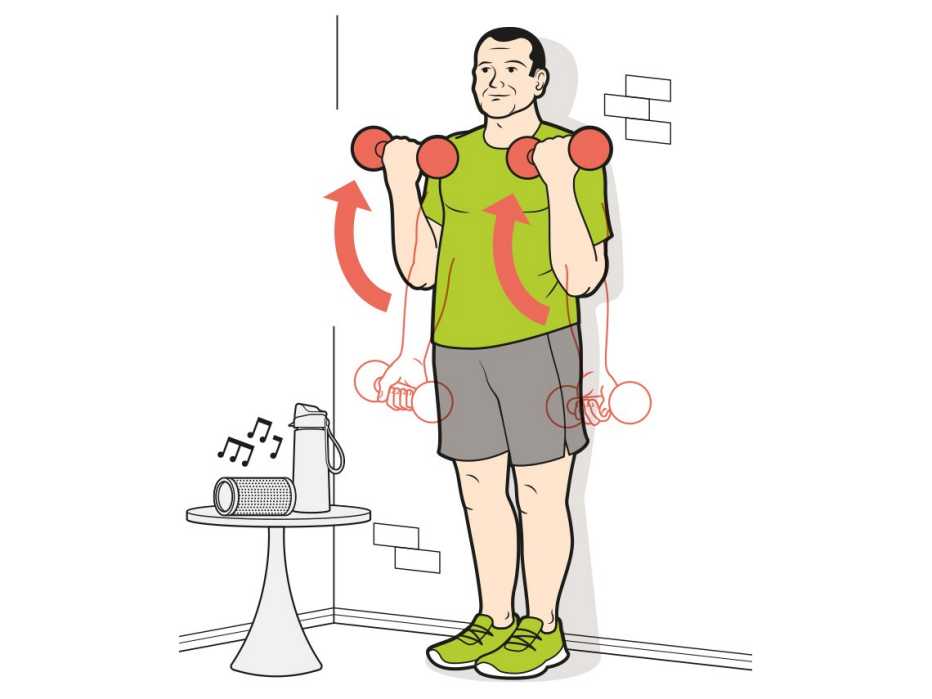
- Stand against a solid wall with a light dumbbell in each hand, palms facing forward and arms at your sides. Your back, glutes, back of your arms, and heels should be supported against the wall throughout the exercise.
- Keeping your upper arms close to your body, bend both elbows and slowly flex your arms, lifting the weights until your palms are in front of your shoulders.
- Hold the pose and then slowly lower the weights until your arms are extended.
- Repeat 10 to 15 times.
Pro athlete tip: Resist the temptation to carry the weights until they touch your shoulders. You may think this will give you more benefit, but it actually puts less strain on your biceps.
